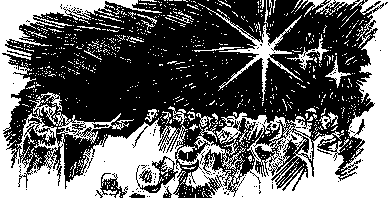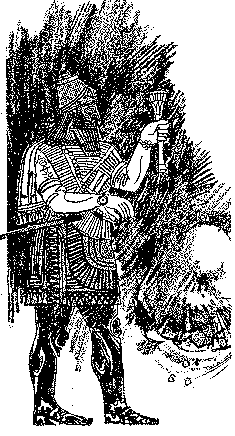| Volume Twenty-Three — Article 3 | Volume 23 | Home |
The Eschatological Nature of the Old Testament
This news is so unspeakably good that it passes all man's capacity to comprehend it. If a man could grasp the excellency of the matter and with a constancy believe the same, he would utterly despise all the power, glory and pleasure that this world pretends to offer. He would be glad and willing to perform any duty and be gratefully ready to face anything. If a man hears this gospel and believes it, he cannot be the same man. For him, old things pass away, and all things become new (2 Cor. 5:17).
The eschatological hope of the Old Testament finds its most specific expression in the book of Daniel. In fact, Daniel is like the Old Testament in miniature. Written during the seventy years of captivity to Babylon,1 it epitomizes the great captivity which began at the gate of Eden. The Jews had lost homeland and kingdom to the king of Babylon. Their sanctuary, which expressed their mode of worship and was the vehicle of the covenant, lay in ruins. Their children were captives in an enemy land. How much like the Fall all over again! No tragedy, however bitter, could prevent those Hebrews from dreaming of a better day. God had put a sense of destiny in their hearts that nothing could quench. So they dreamed of restoration to their homeland — a restored kingdom and a king on David's throne, a restored sanctuary, and a restored people. The prophecy of Daniel tells of this restoration. But like the prophecies in Isaiah, Daniel's picture of restoration transcends the little temporal restoration that took place at the end of the Babylonish captivity. That obviously did not fulfill the prophecies of restoration in Isaiah.2 Even more obviously do the prophecies of Daniel carry us forward to that great final, eschatological restoration.
I beheld till the thrones were cast down, and the Ancient of days did sit. . . . the judgment was set. . . . judgment was given to [rendered in favor of] the saints of the most High. . . . And the kingdom and dominion . . . shall be given to . . . the saints of the most High. . . — Dan. 7:9,10, 22, 27. I saw in the night visions, and, behold, one like the Son of man came with the clouds of heaven, and came to the Ancient of days, and they brought him near before him. And there was given him dominion, and glory, and a kingdom, that all people, nations, and languages, should serve him: his dominion is an everlasting dominion, which shall not pass away, and his kingdom that which shall not be destroyed. Dan. 7:13,14 Of course, Daniel was not the first prophet to speak of that coming day when the King and Judge of all the earth would arise to set matters right. This was a conviction deeply engrained in the Hebrew consciousness. God was, above all, the Lawgiver and the righteous Judge. Even in their annual sanctuary ritual (Yom Kippur, or Day of Atonement) the Jews saw an enactment of judgment day: The Psalmist, too, repeatedly speaks of God's arising in judgment to plead the cause of His downtrodden people and to punish evil. As in prophetic spirit he announces the arrival of that day, his spirit breaks forth in songs of unrestrained joy (see PS. 96:11-13; 67:4). But as we said, it is in Daniel that the eschatological hope of the judgment is given its most definite expression. In a sense, the whole book of Daniel is about God's great intervening act of judgment when the king would be restored. Daniel means God is my Judge, and even the stories of Daniel illustrate God's great interposition on behalf of His people. 3. In Daniel 8 the prophet is told about the restoration and vindication of God's downtrodden Sanctuary. It will be remembered that at the time Daniel saw these visions, the sanctuary at Jerusalem lay in ruins. That he was burdened for its speedy restoration is evident from his intercessory prayer in Daniel 9. "Now therefore, O our God," he prayed, "hear the prayer of Thy servant, and his supplications, and cause Thy face to shine upon Thy sanctuary that is desolate, for the Lord's sake." v.17. But the vision of Daniel 8 carries us beyond the limits of the restoration at the end of the seventy years. Along with Daniel 2 and 7, it takes us forward to the great eschatological restoration, when all that the Jewish temple stood for and prefigured (worship, fellowship, covenant, etc.) will be sadaq (Dan. 8:14) — put right, victorious, vindicated, and restored to its rightful state.3 Isaiah had spoken of a new exodus at the end of the Babylonian rule. Likewise, Jeremiah had spoken of a "new covenant" (Jer. 31), and Ezekiel of a new temple (Ezek. 40). But this new exodus, this hope of a renewed covenant, and this expectation of a glorious temple did not take place at the end of the seventy years in Babylon. This could only take place in an eschatological event. It is in Daniel that this eschatological hope is most clearly expressed. 4. Daniel 12. So far Daniel has spoken of the restoration in terms of the kingdom, the king, and the sanctuary. Thus far the hope is expressed in very theocentric categories, for it is God's restoration from beginning to end — His kingdom, His King and His sanctuary. But in the last vision the hope becomes more personal and describes the restoration of the people of God.. In fact, all symbolism is thrown away as Daniel speaks very literally of the personal hope of every Hebrew: " ... many of them that sleep in the dust of the earth shall awake, some to everlasting life. . . ." Dan. 12:2. Here is what the apostles of the New Testament call the hope of the resurrection (Acts 23:6). This hope was first given to the patriarchs, but it has to be admitted that the doctrine of the resurrection is only implicitly intimated in Moses. In the Psalms the concept begins to emerge more strongly that death cannot be the end of blessed fellowship with the living God. With the possible exception of Isaiah (chs. 25:8; 26:19), the doctrine of resurrection to "eternal life" is given its most definite expression in the book of Daniel. Says Dr. Alan Richardson in his An Introduction to the Theology of the New Testament (Harper & Row):
So the book of Daniel gives the most mature and definite expression to Israel's eschatological hope. The coming of the kingdom of God (Dan. 2), the action of the judgment of God to restore the King (Dan. 7), the vindication of the sanctuary of God (Dan. 8) and the restoration of the people of God (Dan.12) are presented as that which would usher in the life of "the age to come" (Dan. 12). All this would come to pass through "the Seed of the woman" "the Son of David," the One who is called "Messiah" in only one Old Testament book — the book of Daniel. In the fullness of time God would send Him to do the work foretold in Daniel 9:24 —
and to make an end of sins, and to make reconciliation for iniquity, and to bring in everlasting righteousness." Therefore the Hebrew people fully expected that this grand eschatological hope would be fulfilled in the coming of God's Messiah in the last days. —————————————— Footnotes: 1 We are aware of the arguments for the late dating of Daniel, but for reasons which we cannot deal with here, we feel fully justified in holding to the conservative position. It is unthinkable that the New Testament. as we shall see, would make so much use of a forgery of late dating. |
 For all the [Old Testament] promises of God find their fulfillment in Him. — 2 Cor. 1:20.
For all the [Old Testament] promises of God find their fulfillment in Him. — 2 Cor. 1:20. The Book of Daniel
The Book of Daniel 1. In Daniel 2 the hope of the establishment of the Kingdom of God is clearly enunciated. This hope of the coming kingdom is a concept which develops and gradually takes shape in Old Testament history, but it reaches its most mature expression in the book of Daniel.
1. In Daniel 2 the hope of the establishment of the Kingdom of God is clearly enunciated. This hope of the coming kingdom is a concept which develops and gradually takes shape in Old Testament history, but it reaches its most mature expression in the book of Daniel.